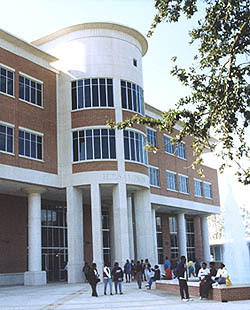
In the spring of 2003, I chaired an Urban Land Institute Advisory Services Panel focused on strategies for continuing the revitalization of downtown Birmingham, Ala. As in many cities this was driven by the stock of historic downtown buildings slowly being converted to either new office buildings or loft condominiums, supported by a handful of downtown cultural assets and public spaces. Our tour host proudly invited to the panel’s attention that three of the four buildings anchoring downtown’s “100 percent corner” were the high-rise headquarters of three regional banks.
No one on the panel was prepared to share with our hosts what many of us were thinking at the time: That these regional banks would inevitably be swallowed up by much larger national banks, their staffs pared down substantially, and most downtown operations relegated to “back-offices” in much less-expensive suburban office park locations well outside the downtown area.
What was, however, truly remarkable was that a mere eight blocks away from the “100 percent corner,” the real economic engine for the future of Birmingham–the University of Alabama Birmingham (UAB)–seemed all but ignored by the city.
This stark contrast between perception and reality prompted me to focus on the relationship between urban colleges and universities and their “host” jurisdictions.” Universities need to be seen as the primary source of “knowledge workers”–the smart, creative, and skilled people forming the foundation of successful companies in a region. They need to outgrow their medieval culture of isolation and become better integrated into the cities and towns where they are located.
The ULI Birmingham panel reflected a tendency I have since noted to find fault with the way the cities handle growth issues regarding urban campuses, imploring Birmingham to “get out of UAB’s way.” Yet it is also very true that colleges and universities often have trouble getting out of their own way. In fact, playing nice with others outside of their own ivy-covered walls is not generally in the DNA of most academic institutions. They tend to be introspective to a fault while believing they are always “the smartest people in the room.”
And yet, it may be just as much in their economic interest as that of their surrounding communities for colleges and universities to learn to work cooperatively with their host jurisdictions. At the same time many states are beginning to realize that the relevance of academic endeavors to commercial enterprises has increased exponentially since World War II. Similarly, the business community has embraced the concept of lifelong learning, often providing tuition reimbursement and sabbaticals to employees to encourage them to return to school.
We already can cite a few academic institutions where we see this synergy wholeheartedly embraced with marked success. Campus Partners, the result of a true collaboration between the city of Columbus, Ohio, and Ohio State University – and the public-private partnerships it has spawned – has resulted in the dramatic transformation of previously underdeveloped and/or distressed neighborhoods on the periphery of the OSU campus into vibrant new campus gateways.
One area that faces dramatic physical, economic, and sociological distress are the East Baltimore neighborhoods surrounding the educational and research campus of Johns Hopkins University. The East Baltimore Development, Inc. (EBDI), a collaborative effort between the City of Baltimore, Baltimore Development Corporation, the Johns Hopkins Institutions, local foundations, and others are making progress in creating a new economic engine for the city in an 80-acre assemblage of land surrounding the Hopkins medical campus.
And in West Jackson, Miss., UniDev has been working with Jackson State University (JSU), an historically black university, the JSU Foundation, the city of Jackson, and the State of Mississippi, to acquire and transform approximately 50 acres of distressed and dilapidated housing to create a new gateway between the city and the JSU campus.
These examples also suggest a need for colleges and universities to emerge from ingrained planning practices, including the 600-year-plus dominance of the campus quadrangle. As iconographic as the campus quad is, its preeminence is being challenged by the university town center, a new physical form that only now is emerging through a confluence of circumstances that could create a new paradigm for the relationship between the "academic village" and the outside world.
A university town center combines housing with non-residential uses designed to bring the student population, institutional functions, and the surrounding community together for common purposes. lt may complement or even replace the traditional student union building as the locus of campus life. It also can foster closer social, cultural, and, most important, economic ties between the academic institution and the surrounding community, as well as with the local government. The selection and mix of uses of the university town center need to be designed to maximize synergies among the academic and nonacademic populations.
Ultimately it is critical to open urban college and university campuses to their surrounding communities. In the information age the historic separation of town and gown is not only antiquated but a detriment to both parties.
More often than not, the challenge in achieving this kind of transformative change within academia is reminiscent of the old joke, “How many psychiatrists does it take to change a light bulb?” Only one but the light bulb must want to change. The same can be said of the majority of our urban colleges and universities.
Peter Smirniotopoulos, Vice President – Development of UniDev, LLC, is based in the company’s headquarters in Bethesda, Maryland, and works throughout the U.S. He is on the faculty of the Masters in Science in Real Estate program at Johns Hopkins University. The views expressed herein are solely his own.












